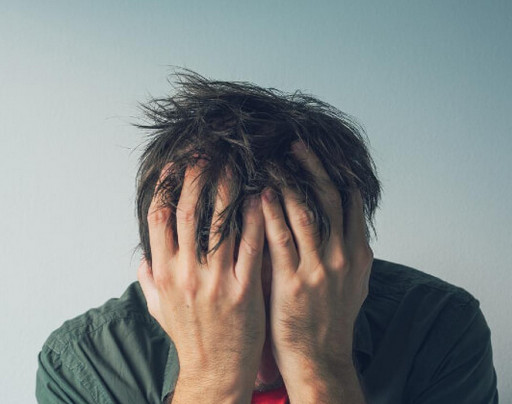Crippling anxiety is a term used to describe severe anxiety that significantly impacts an individual’s daily life and ability to function. Crippling anxiety can take many forms, including generalized anxiety disorder, panic disorder, and phobias. This type of anxiety can cause intense feelings of fear, worry, and nervousness that can be difficult to control.
Crippling anxiety can have a number of physical and emotional symptoms, including heart palpitations, sweating, shaking, dizziness, and difficulty breathing. It can also lead to feelings of fear, guilt, and shame, which can further exacerbate anxiety symptoms. In severe cases, crippling anxiety can lead to panic attacks, which can cause physical symptoms such as chest pain and difficulty breathing.

Crippling anxiety is believed to be caused by a combination of genetic, environmental, and psychological factors. Individuals who have a family history of anxiety disorders are more likely to experience crippling anxiety. Similarly, individuals who have experienced traumatic events or significant stressors in their lives may be more prone to developing anxiety. In addition, individuals who have certain personality traits, such as being perfectionistic or having high levels of introversion, may also be more prone to experiencing crippling anxiety.
Crippling anxiety can have a significant impact on an individual’s quality of life. It can affect work performance, social relationships, and daily activities. In severe cases, it can lead to social isolation, substance abuse, and depression.
However, there are several strategies that can help individuals manage and reduce their crippling anxiety. These strategies include therapy, medication, and lifestyle changes.
Cognitive behavioral therapy (CBT) is a type of therapy that can be particularly effective in managing crippling anxiety. CBT focuses on changing negative thoughts and behaviors that contribute to anxiety. During therapy, individuals work with a therapist to identify the specific triggers that cause their anxiety and develop coping strategies to manage these triggers.
For example, an individual who experiences anxiety while driving may work with a therapist to develop a specific plan for managing their anxiety while driving. This may include practicing deep breathing exercises, visualization techniques, and positive self-talk. Over time, individuals who undergo CBT may learn to manage their crippling anxiety more effectively and reduce its impact on their daily lives.
In addition to therapy, medication can also be an effective way to manage crippling anxiety. There are several types of medications that can be used to treat anxiety, including anti-anxiety drugs, beta-blockers, and antidepressants. Anti-anxiety drugs, such as benzodiazepines, work by calming the nervous system and reducing feelings of worry and fear. Beta-blockers, such as propranolol, can be used to manage physical symptoms of anxiety, such as heart palpitations and sweating. Antidepressants, such as selective serotonin reuptake inhibitors (SSRIs), can help to regulate mood and reduce anxiety.
It is important to note that medication should not be used as a sole treatment for crippling anxiety and should only be used in combination with therapy and lifestyle changes. Medication can be addictive and can have side effects, so it is important to work with a doctor to determine the best treatment plan for each individual.
Lifestyle changes can also be an effective way to manage crippling anxiety. For example, individuals who experience crippling anxiety may benefit from practicing relaxation techniques, such as deep breathing exercises and meditation. Exercise can also help to reduce anxiety and improve mood, as it releases endorphins and other neurotransmitters that promote feelings of well-being.
In addition to these strategies, it can be helpful for individuals with crippling anxiety to make changes to their daily routine. This may include getting enough sleep, adopting a healthy diet, and avoiding caffeine and other stimulants that can trigger anxiety symptoms. Regular exercise and a healthy diet can help to reduce stress levels and improve overall physical health, which can help to reduce symptoms of anxiety.
It is also important for individuals with crippling anxiety to develop a strong support system. This can include friends, family, or a support group of others who have experienced similar experiences. Talking about their experiences and feelings can help individuals with anxiety to feel less isolated and more understood.
In conclusion, crippling anxiety is a severe form of anxiety that can significantly impact an individual’s daily life and ability to function. It can cause intense feelings of fear, worry, and nervousness, as well as physical symptoms such as heart palpitations and difficulty breathing. The causes of anxiety are believed to be a combination of genetic, environmental, and psychological factors.
There are several strategies that can help individuals manage and reduce their anxiety, including therapy, medication, lifestyle changes, and support from friends and family. With the right treatment and support, individuals with anxiety can learn to manage their anxiety and improve their quality of life. It is important for individuals who experience anxiety to seek help from a doctor or mental health professional. By seeking treatment and making lifestyle changes, individuals with anxiety can take control of their symptoms and lead a fulfilling life.


